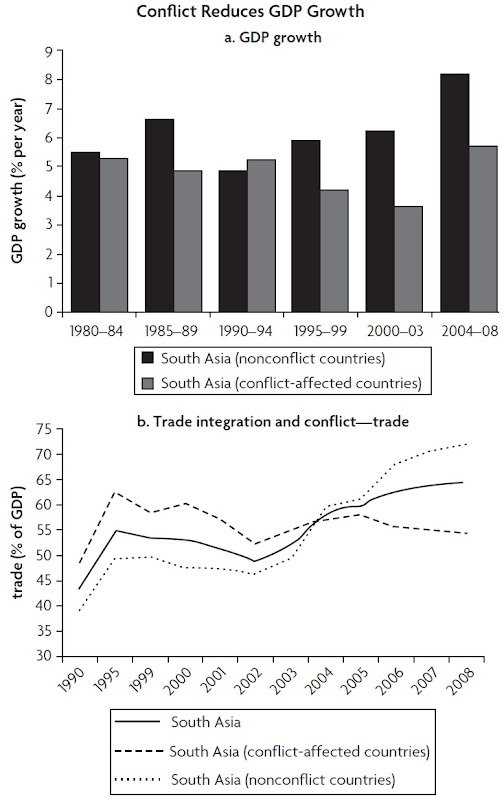In a new book published by the WB, Dipak Dasgupta, Ejaz Ghani, and Ernesto May have a chapter on economic policy challenges for South Asia. The authors have the following recommendations for South Asia:
- Create fiscal space to improve macroeconomic stability, avoid crowding-out the private sector, and permit financing of infrastructure and social safety nets.
- Manage inflationary pressures, particularly food prices, with renewed attention to agricultural productivity growth.
- Revisit South Asia's trade and investment integration strategy to take advantage of the global rebalancing underway, including supporting faster manufacturing growth.
Attention has to be focused on governance, conflict, demographic transition, and urbanization and spatial transformation. Also, tax revenue needs to be increased as the ratio of tax revenue to GDP is very low in South Asian countries.

Also, South Asia needs to invest in infrastructures, a key binding constraint to economic growth in the region. It also needs to have effective social safety nets, control inflation and food prices, revitalize agricultural sector to increase production, seek quick integration into East Asia, and support faster manufacturing growth as East Asia is transitioning to more skill-intensive manufacturing.
Conflict has severely impacted growth in South Asia. Given its income level, Nepal had the most fatalities between 1998 and 2004 as a result of conflict. Note that conflict-affected countries had lower GDP growth rate and trade.

Since 150 million people are entering the labor force in the next decade, without appropriate provision of providing them decent paying jobs, they could be a liability instead of providing demographic dividends. Workers are trapped in low-wage, low-productivity jobs. More jobs have to be created in the industrial sector. Skill enhancement and addressing high informality are also necessary.

[Here is a general summary of the book which argues that developing countries will come to the rescue of the world economy in the post-crisis period. Here is a summary of a chapter on economic crisis, migration and remittances/ )